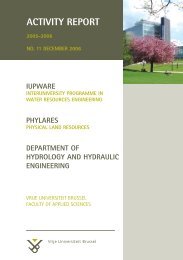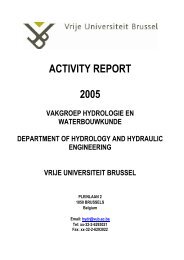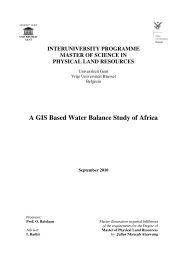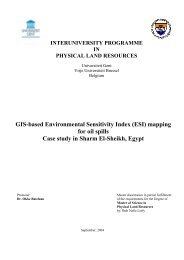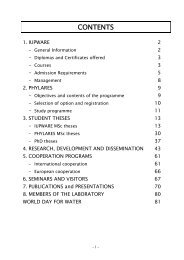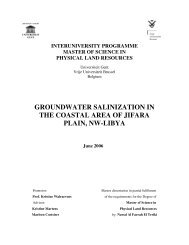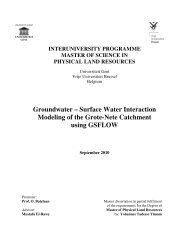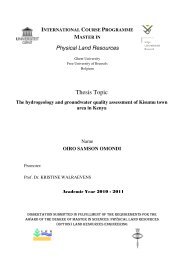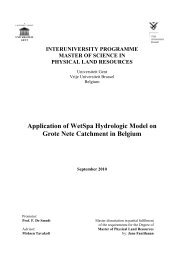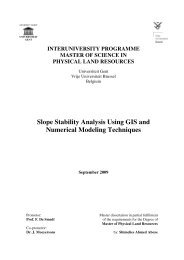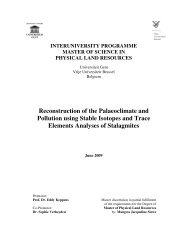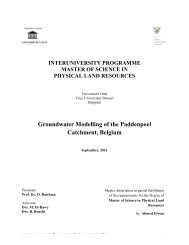Surface Water Interaction Modelling Using Visual MODFLOW and GIS
Surface Water Interaction Modelling Using Visual MODFLOW and GIS
Surface Water Interaction Modelling Using Visual MODFLOW and GIS
- No tags were found...
Create successful ePaper yourself
Turn your PDF publications into a flip-book with our unique Google optimized e-Paper software.
PHYLARESApproach <strong>and</strong> methodology / ch.2__________________________________________________________________________________________5broadly divided into two classes, analytical <strong>and</strong> numerical, even though the hybrid of these twoclasses is not uncommon. Analytical methods yield exact solutions to the governing differentialequations. Darcy’s law is an example of an analytical model. To solve an analytical model, onemust know the initial <strong>and</strong> boundary conditions of the flow problem. These conditions must besimple enough that the flow equation can be solved directly by using calculus.Numerical methods approximate the differential equations with a set of algebraic equations.These recast equations are numerical approximations <strong>and</strong> the answers obtained are alsoapproximations. The equations are most commonly in matrix form <strong>and</strong> they are solved on adigital computer, unlike analytical models which can be solved rapidly, accurately <strong>and</strong>inexpensively with a programmable calculator or a spread sheet on a personal computer.Generally, analytical solutions can be obtained under many simplifying assumptions, such as aunidirectional velocity field, a set of uniform transport properties, a simple flow domaingeometry, <strong>and</strong> a simple pattern of sink <strong>and</strong> source distribution. For this reasons, numericalsolutions which are capable of approximating more general conditions, are more widely used infield applications (Zheng & Bennett, 2002). This thesis is a numerical model to approximatesteady state water balance <strong>and</strong> interaction of surface <strong>and</strong> groundwater.2.2 Groundwater modelsGroundwater models are computer programs of groundwater flow systems for the calculation ofgroundwater flux <strong>and</strong> head. Because of the simplifying assumptions embedded in themathematical equations <strong>and</strong> the many uncertainties in the values of data required by the model, amodel must be viewed as an approximation <strong>and</strong> not an exact duplication of field conditions.Groundwater models, however, even as approximations are a useful investigation tool.For the calculations one needs (hydrological) inputs, (hydraulic) parameters, initial <strong>and</strong> boundaryconditions.The input is usually the inflow into the aquifer or the recharge, which variestemporally <strong>and</strong> spatially.Important parameters are the topography, thicknesses of soil <strong>and</strong> aquifer layers <strong>and</strong> theirhorizontal <strong>and</strong> vertical hydraulic condustivity, porosity <strong>and</strong> storage coefficient, capillarity of the______________________________________________________________________________________Groundwater – <strong>Surface</strong> water interaction modeling using visual <strong>MODFLOW</strong> <strong>and</strong> <strong>GIS</strong>




